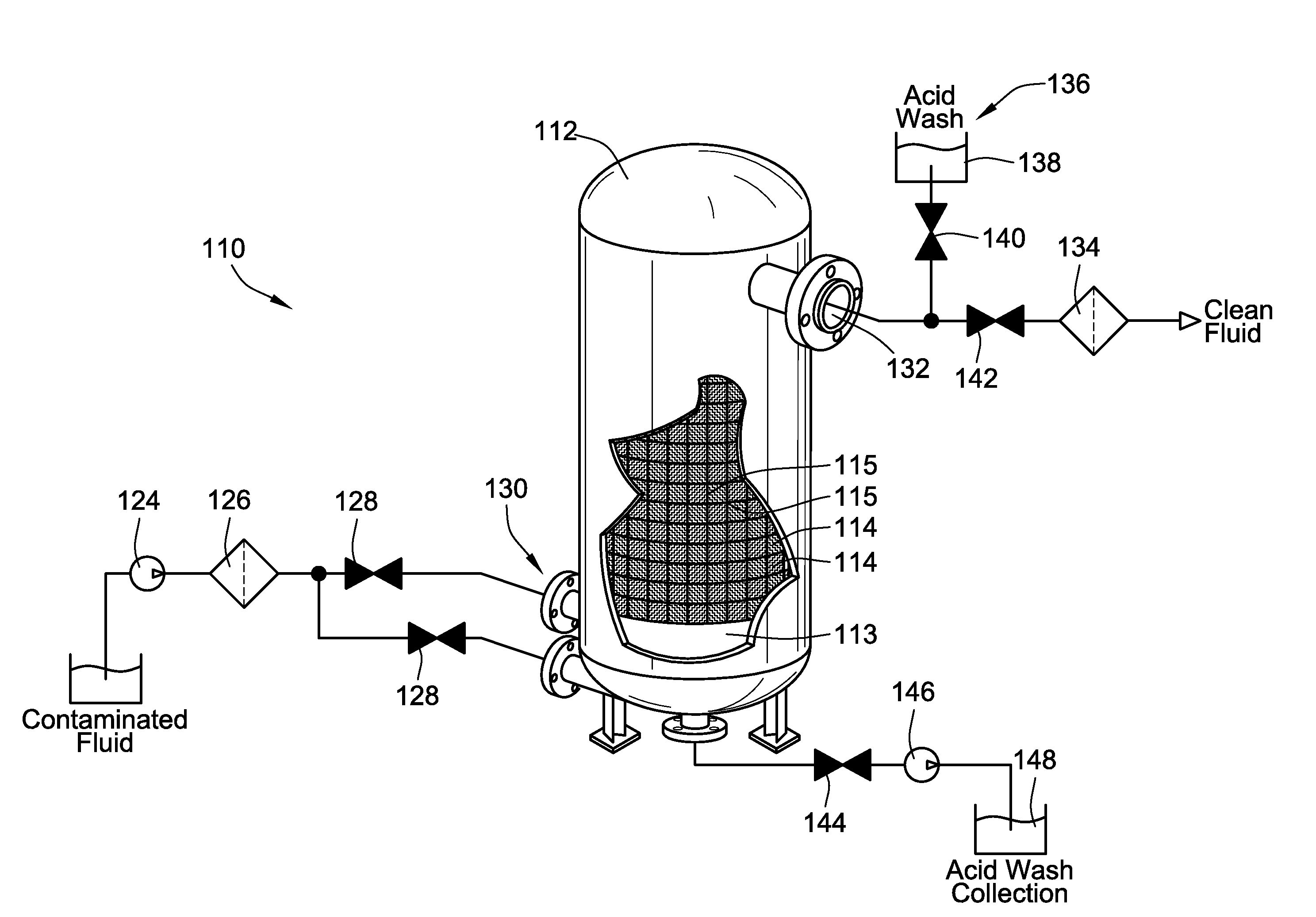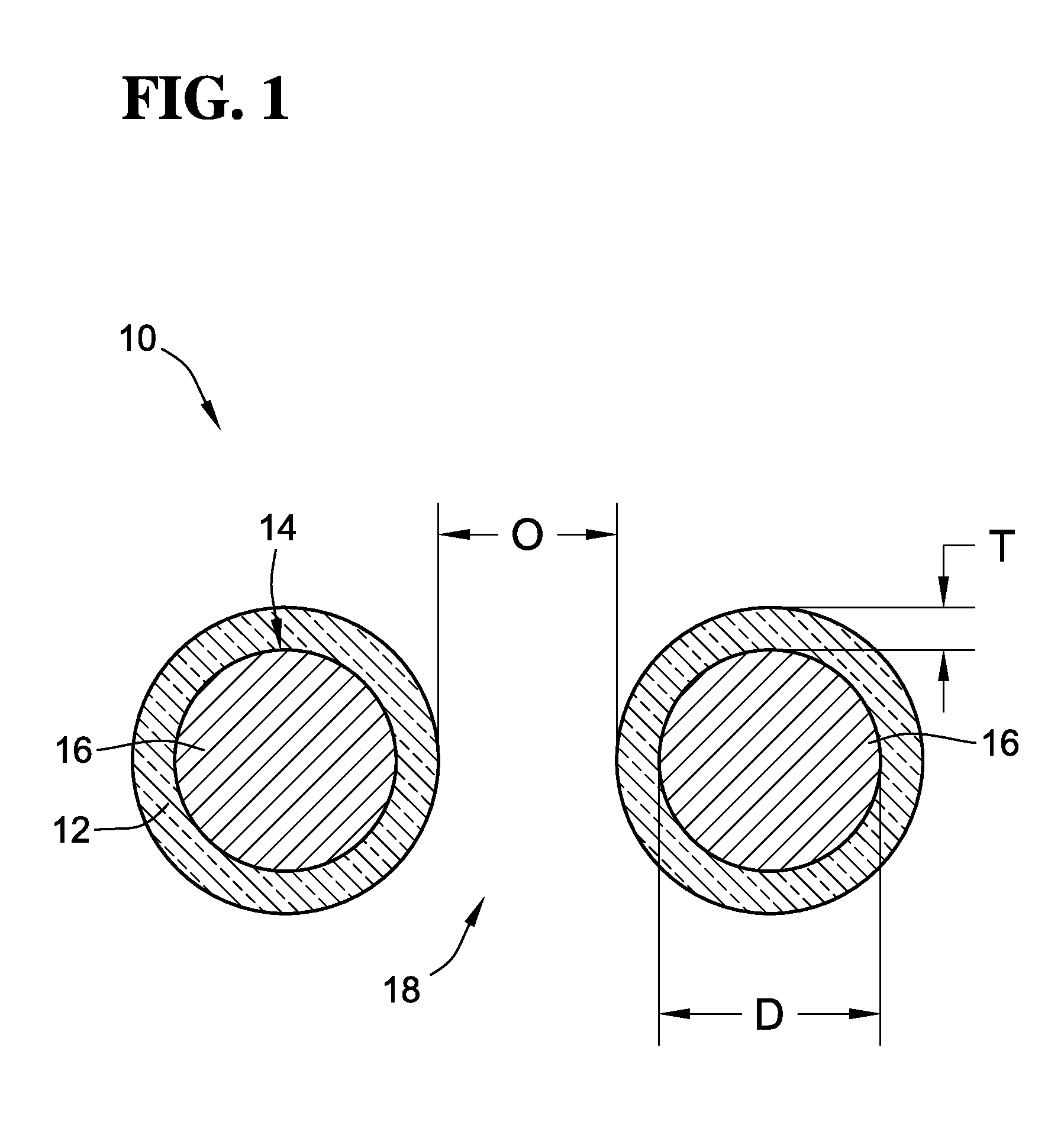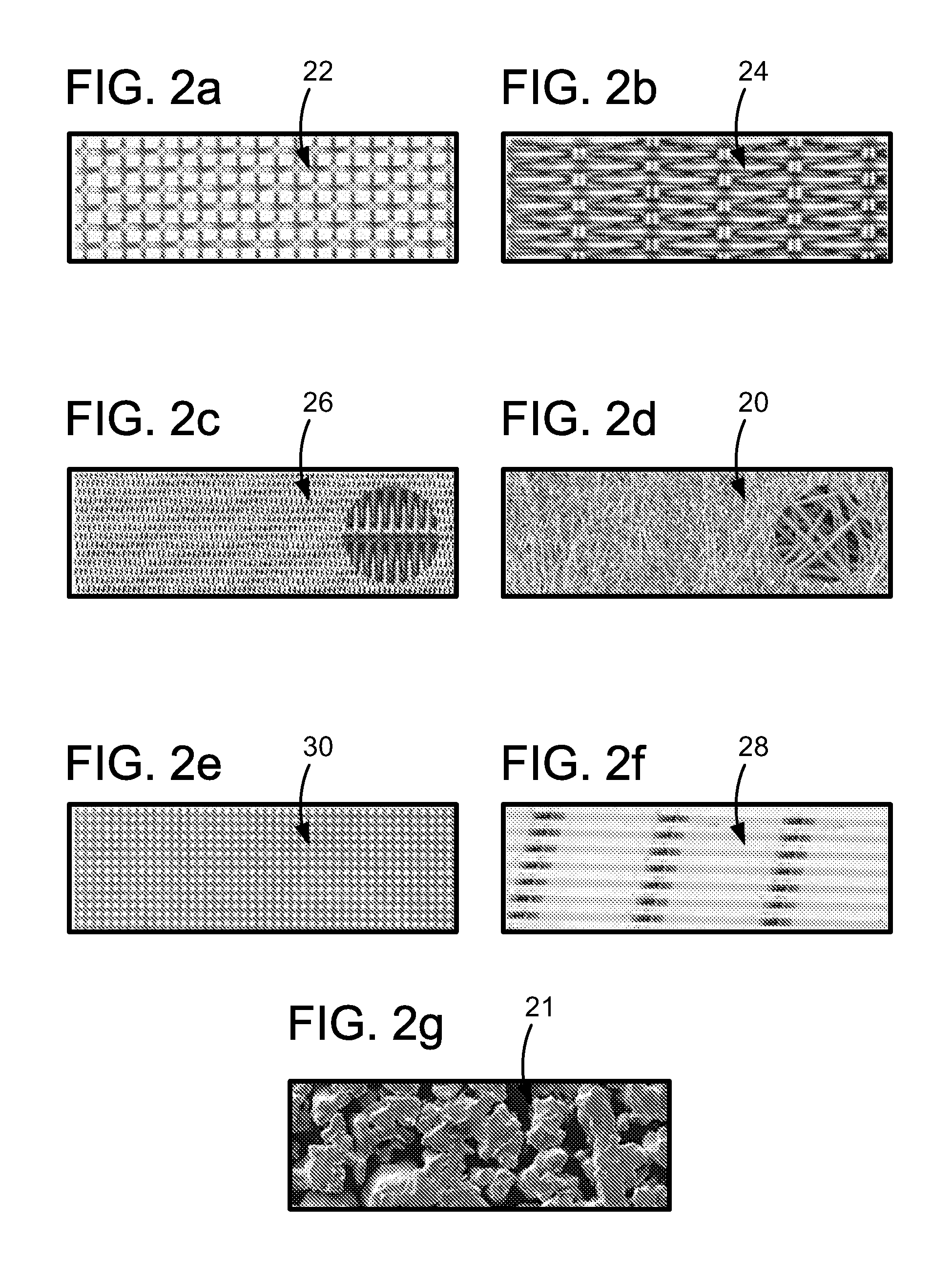Contaminant adsorption filtration media, elements, systems and methods employing wire or other lattice support
a technology of adsorption filtration media and adsorption filtration, which is applied in the direction of filtration separation, other chemical processes, separation processes, etc., can solve the problem that the effective surface area of contaminant adsorption is not as large as the effective surface area of adsorbent particles, and achieve the effect of facilitating the reclamation of contaminants
- Summary
- Abstract
- Description
- Claims
- Application Information
AI Technical Summary
Benefits of technology
Problems solved by technology
Method used
Image
Examples
example 1
[0064]A 12 micron sintered stainless steel fiber mesh (wire thickness of 12 micron), having a porosity of 80% before coating, and a mesh material layer thickness of 4.5 mil was selected for coating with silica material. A 7.5% weight percentage SBA-15 (mesoporous silica film coating) was coated on the stainless steel metal fiber mesh and calcined at 500° C. FIG. 3 are SEM images showing various magnification levels of the media. The pores and porosity of the metal fiber mesh is maintained to allow for fluid flow through the filter media. From the SEM images, it appears that the metal fibers are 100% encapsulated in the mesoporous material, even though it is noted that some cracks appear in the coating. Nanopores may not readily be apparent given the magnification level (e.g. nanopores in the mesoporous material are believed to be 2-4 nanometers is size). The coated mesh material can be handled, cut, bent without causing noticeable dislodging or removable of the coating.
example 2
[0065]A 12 micron sintered stainless steel fiber mesh (wire thickness of 12 micron), having a porosity of 80% before coating, and a mesh material layer thickness of 4.5 mil was selected for coating with silica material. A 12% by weight of an SH-modified SBA-15 (mesoporous silica film coating that is modified, that is functionalized for contaminant removal) was coated on sintered metal through an extraction process. Different magnification levels of the resulting coated sintered stainless steel fiber mesh is shown in FIG. 4. Similar observations are made for Example 2 as Example 1. The pores and porosity of the metal fiber mesh is maintained to allow for fluid flow through the filter media. From the SEM images, it appears that the metal fibers are 100% encapsulated in the mesoporous material, although it is noted that some cracks appear in the coating. The coated mesh material can be handled, cut, bent without causing noticeable dislodging or removable of the coating. This example wa...
example 3
[0066]In comparison to Examples 1 and 2, a slightly smaller sintered stainless steel fiber mesh (smaller than wire thickness of 12 micron), was selected for coating with mesoporous material. A 12% by weight of a zeolite (ZSM-5 zeolite crystals, SSA around 300 m2) were deposited on centered metal mesh fibers, calcined at 500° C. From the SEM images at FIG. 5, homogeneous nano-pore structures on the surface of each individual wire and the coating materials between the wires. Under high magnification (×10000), it is observed that the wire surface is covered by many nano-rods and additional pore structures are gaps between those nano-sized rods.
PUM
| Property | Measurement | Unit |
|---|---|---|
| thickness | aaaaa | aaaaa |
| thickness | aaaaa | aaaaa |
| thickness | aaaaa | aaaaa |
Abstract
Description
Claims
Application Information
 Login to View More
Login to View More - R&D
- Intellectual Property
- Life Sciences
- Materials
- Tech Scout
- Unparalleled Data Quality
- Higher Quality Content
- 60% Fewer Hallucinations
Browse by: Latest US Patents, China's latest patents, Technical Efficacy Thesaurus, Application Domain, Technology Topic, Popular Technical Reports.
© 2025 PatSnap. All rights reserved.Legal|Privacy policy|Modern Slavery Act Transparency Statement|Sitemap|About US| Contact US: help@patsnap.com



